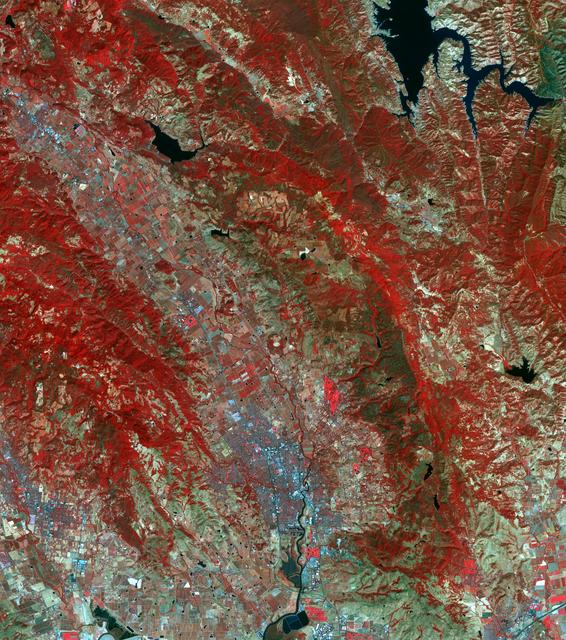
As more frequent and dangerous wildfires become part of the “new normal” of a changing climate, Megan Cattau, a human-environment systems assistant professor in the College of Innovation and Design, and her colleagues at the University of Colorado Boulder, were driven to discover how anthropogenic (or human-related) ignitions are changing the physical characteristics of fire at a national scale.
To better identify and explore anthropogenic ignitions of wildfire, Cattau undertook research with a team in the Cooperative Institute for Research in Environmental Sciences (CIRES) Earth Lab. The team conducted a major study to study wildfire at a national level by integrating and analyzing data from three major sources, all of which include different and complementary information about fires:
- Moderate Resolution Imaging Spectroradiometer (MODIS) Active Fire Product, a data set derived from remotely sensing the heat coming off of fires to provide information on wildfire locations, dates and intensity.
- Monitoring Trends in Burn Severity (MTBS) Burned Areas Boundaries Dataset, a data set that detects fires using the differences in remotely sensed imagery before and after the fires.
- Fire Program Analysis fire-occurrence database for the contiguous U.S., which is a compilation of government records on occurrences of fires and their ignition source.
Integrating information from these three sources, Cattau and her colleagues discovered that since 1984, the length of fire seasons across the United States had increased by 17 percent, the fires themselves have become 76 percent larger and 12 percent more frequent, and ultimately human ignitions have increased nine percent proportionally over that time. Human ignition sources could be anything from a campfire, to a cigarette butt, to sparks from power lines.
“We know that anthropogenic ignitions are increasing across the country. Over 80 percent of fires are started by people at this point,” Cattau said. “And so this was the first study looking at how those increased anthropogenic ignitions specifically are changing the physical characteristics of fire.”
The authors found that human-started wildfires are more frequent, smaller, less hot and occur over longer seasons than fires started by lightning.

Surprisingly, Cattau was guided to this research by an unlikely creature: orangutans.
While pursuing her doctoral degree, Cattau was working in Indonesia where her efforts were focused on single-species conservation for orangutans.
“Their similarity to people, of course, that’s one big appeal. But also they serve a fundamental ecological role in the landscapes where they live,” said Cattau. “They’re important seed dispersers, for example, and they’re often considered an umbrella species, meaning conservation targeted at orangutans because they’re big, charismatic megafauna protects other species that live in the same ecosystems.”
Cattau was monitoring these orangutans and modeling their density and distribution across peat swamp forest landscapes. However, she quickly became aware of the impact that the massive Indonesian wildfires had on the orangutan’s ecosystems. With this realization came a fascination with the strange relationship between fire and mankind.
“I just got interested in fire in its own right. It’s a fascinating process because it is fundamentally a physical process, but so heavily influenced by people, in terms of its occurrence and the characteristics of fire, but also in terms of how fire affects us. We’re just completely linked,” said Cattau.
“As our world sees increased development, we can also expect to see increased human ignitions,” said Cattau. “This can impact people’s safety, especially those from vulnerable populations. And this shift is also bringing fires into places where there wasn’t fire before, which can damage ecosystems.”
Ultimately, increasing anthropogenic ignitions – in tandem with climate and land cover change – are contributing to a “new normal” of fire activity across continental scales.
The team’s study, titled “Anthropogenic and lightning-started fires are becoming larger and more frequent over a longer season length in the U.S.” was published in Global Ecology and Biogeography and can be found at: https://onlinelibrary.wiley.com/doi/abs/10.1111/geb.13058
Funding for the team’s research was provided by National Aeronautics and Space Administration (NASA) New Investigator Program (NIP) grant 80NSSC18K0750 to Cattau.